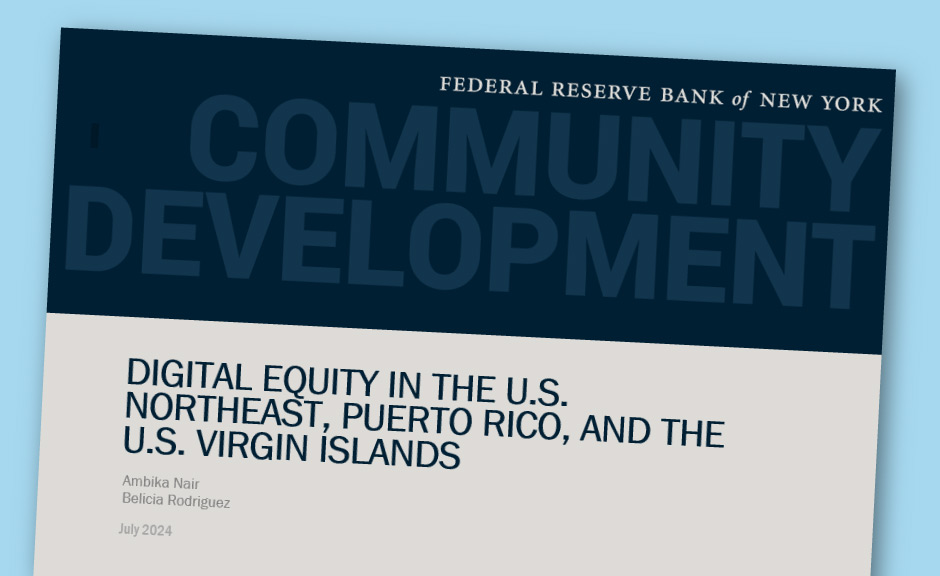
High-speed internet is important for access to services including telehealth, online banking, benefits enrollment, and homework. But an estimated 12 percent of Americans did not have high-speed internet access in 2021.
Legislation, including the 2021 Digital Equity Act, has focused on expanding broadband service for populations that lack it. The New York Fed’s Community Development team has analyzed and shared broadband and socioeconomic data with groups working on proposals to win grants to expand access in their states and territories under the legislation.
The resulting report, “Digital Equity in the U.S. Northeast, Puerto Rico, and U.S. Virgin Islands,” examines broadband, cost, speed and availability for different populations in those areas between 2020 and 2023. It finds that rural, lower income, and tribal communities are most affected by a lack of broadband access. Tribal lands and rural communities have the slowest download and upload speeds in the areas the authors studied.
The report finds the lowest-cost broadband available can be as high as 2 percent of median income in the rural areas the report covers as well as parts of New York City, including the Bronx, Upper Manhattan, the Lower East Side, and Eastern Brooklyn. By comparison, researchers say households typically spend around 3 percent of their income on utilities.
Additionally, the authors find that internet speeds reported by internet service providers are often higher than the speeds reported by users who conduct speed tests. This discrepancy is largest for Puerto Rico and the U.S. Virgin Islands.
The report was developed as part of the New York Fed's Community Development efforts, which have three areas of focus: health, household financial well-being, and climate risk.










